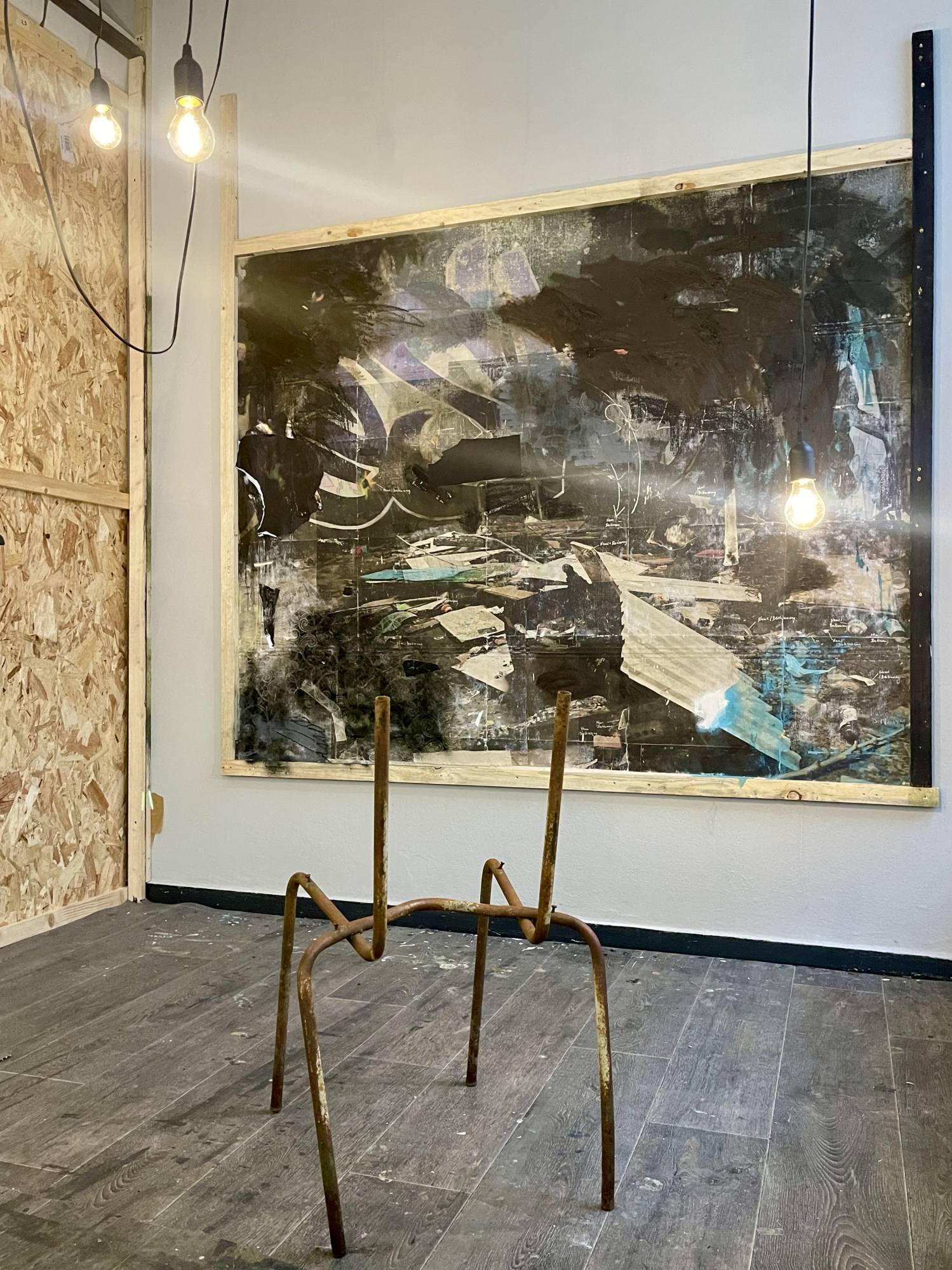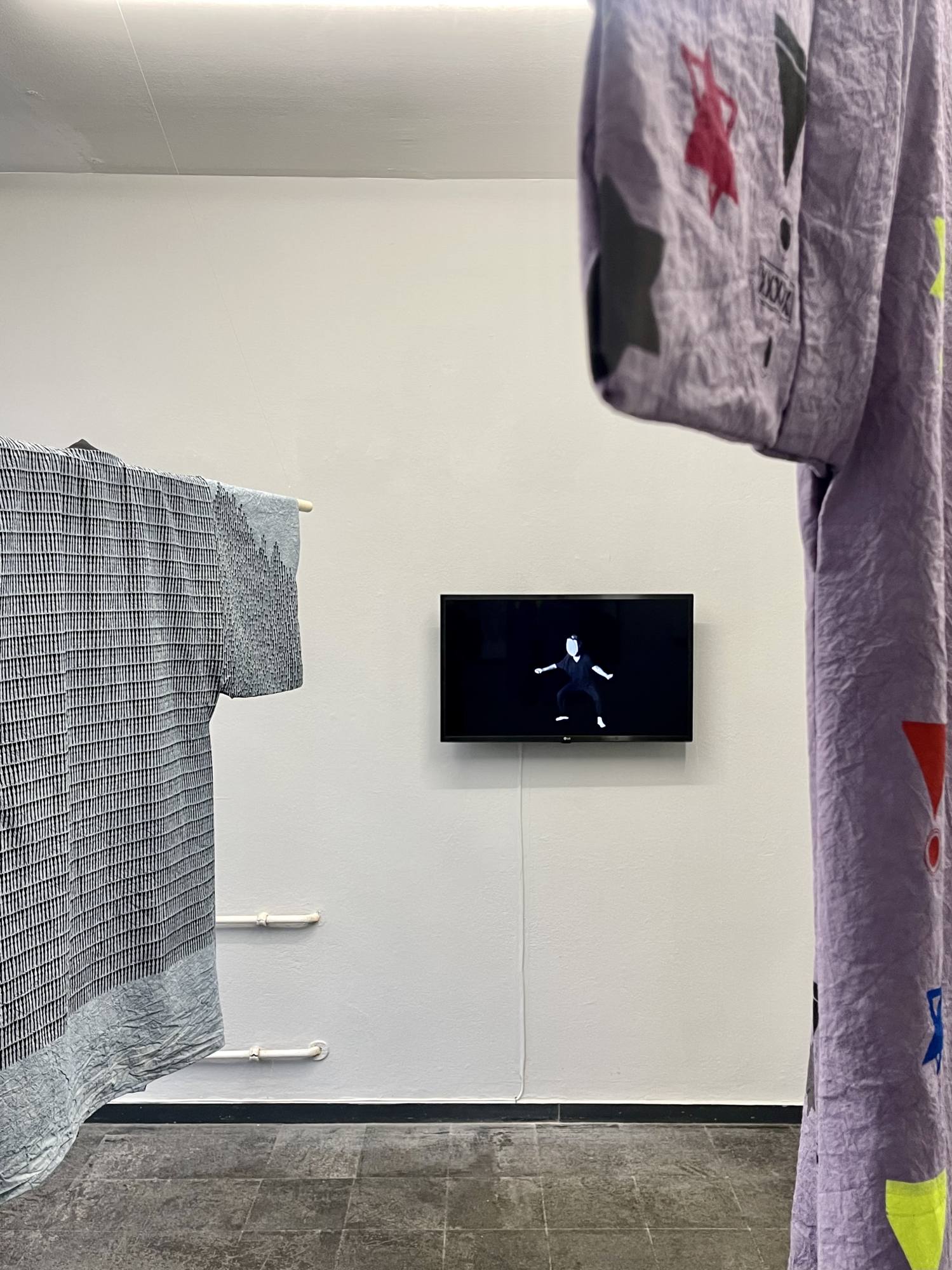Vernissage
Fri 24 Nov 5 – 9 pm
Opening hours
Wed – Sat 2 – 6 pm
and by appointment at office@frontviews.de
Free entrance
Location
EIGENHEIM and frontviews at HAUNT
Kluckstraße 23 A / yard
D - 10785 Berlin
This project is produced by EIGENHEIM Berlin / Weimar and hosted by frontviews. It´s also made possible with the initiative of the whole collective.



















Programme
Vernissage
Fri 24 Nov 5 – 9 pm
at 7 pm: guided tour with the artists through the exhibition.
Please reserve your attendance at rsvp@frontviews.de
The Art Christmas Bazaar
MASTERPIECES, MULTIPLES & MISTLETOES
Sat 16 Dec 2 pm – 9 pm
During the festive high season, EIGENHEIM and HAUNT jointly present a colourful bazaar with various editions, multiples, art books, and unique pieces. All this by the mulled wine pot and under the mistletoes. All you Art Lovers, Givers, and Spenders out there – please feel warmly invited to choose some great pieces of art and support EIGENHEIM and HAUNT just naturally.
Our bazaar takes place at the Finissage of The Waters You Touched, now Turn into Concrete, our final exhibition of the year with the artists Gökçen Dilek Acay, Anna Bittersohl, and Nina Röder.
Finissage
Sat 16 Dec 5 – 9 pm
at 5 pm: guided tour by the curators followed by a performance
Please reserve your attendance at rsvp@frontviews.de
"the waters you touched, now turn into concrete"
The poetic title of the exhibition, which can be interpreted in many different ways, takes us on a journey through the three different artistic positions of Gökçen Dilek Acay, Ni- na Röder, and Anna Bittersohl. Water, the symbol of life, movement, and formability, is brought to a standstill or transformed into concrete by touch. Whether this can be read as a metaphor for the artistic production process or as a warning against man's destruction of the environment remains an open question - and that is a fitting conclusion, as the three artists' approaches differ both in terms of content and form.
When we consider Nina Röder's underwater landscapes and portraits, for example, a fundamental characteristic of the medium of photography comes to mind. Photogra- phy captures movement, brings a living moment to a standstill, and preserves it like a memory. The familial transmission of memories and traumas forms an important dimension of the series "Darkness in which I swim" shown in this exhibition. Through the darkness of the photographs, Röder draws on a melancholy that could already be traced in her earlier works in the natural space. It is a darkness based on the transgenerational trauma of fear of loss, which primarily affects the female line of her family and was presumably triggered by the early death of her great-grandmother. Another thematic level of the series relates to Röder's long-standing fascination with algae. While some people perceive them on the surface of the sea as disgusting, creepy, or frightening because it is impossible to see what is underneath, Röder pursues their personally perceived aesthetic beauty and decorates them as her mother's hair. This series is initially a turn towards creatures that live in different depths of the sea, but which are also shaped by historically grown narratives - like the octopus. In films about aliens, it often serves as a phenotypical model and is thus stigmatized as alien or threatening. Due to its different brain structure, it is also a source of fascination: Scientists published a study in the journal "Proceedings of the Royal Society B" in 2021, which attributed so-called "episodic-like memory" to oc- topuses. An ability that allows squid to remember exactly when and where certain events took place until the last day of their lives. However, due to their reproduction behavior, they do not pass these memories on to their descendants.
As soon as you think or feel something that has not been thought or felt before, this new position in the world has solidified and is an indelible part of your individual existence. The indefinite buzzing around of feelings and impressions can be understood as a fluid aggregate state until a clear thought is grasped. As soon as a thought can be captured in the rush of impressions, it cements itself in reality and, regardless of whether it is revised or discarded, it is part of the confrontation with the world. Thoughts, experiences, and dialogs with places and objects play an increasingly important role for Anna Bittersohl in the creation of her works. The places and objects of her interest are characterized by upheaval and change, liveliness and movement. Let us allow a short quote from the artist to take us into her world of perception: "Nothing that is alive is static. Why do I actually want to take the chair with me? When I was here for the first time, I was looking for a footpath into the open-cast mine, but all the paths around me ended in the middle of the forest. I left it here then, now I've returned for the chair. It's hard to tell whether he belongs here or not. It's slowly getting darker." Condensed perceptions solidify in Anna Bittersohl's paintings and installations in a highly aesthetic and direct way. It seems as if there is a direct connection between the moment of experience and the genesis of the work. This basis for her paintings and complex as well as elaborate spatial installations is a comprehensible development of Anna Bittersohl's motifs, which were based on fragmentary memories of her own experiences and characterized by fragmentary, figurative elements interspersed with overlays and breakthroughs. The new works are more abstract than those that were directed at the memories of the past due to their focus on the sensual present. The gift of capturing such feelings and sensory perceptions in epic, expressive, and colorful images opens a door into the artist's world and allows the viewer to participate in the richness of sensory impressions.
Gökçen Dilek Acay is interested in the socio-political conditions within human existence is possible. Oppressive power structures, normative body politics, and restrictive gender roles are analyzed and criticized with artistic methods in the search for an ideal society. In her works, the human in the animal often forms a counter-figure to the animal in the human. She uses various metaphorical elements in her narratives, from the minimal and dysfunctional states of the body and mind to animal figures, their meanings, and symbols. The human body and everything that has to do with the human being takes place in her stories through the transformation of different bodies. In this sense, many roles of the body and their meaning shift in Acay's works, such as the transformation of the essence of animals into different states that are symbolic, or religious symbols that lose their meaning. It is these transitions between states and the hybrid forms that challenge our viewing habits, such as fixed categories and assigned meanings. The static is set in motion, the inorganic appears miraculously organic, the dead come to life, and human and animal faces merge into unknown hybrids. Acay has been exploring experimental craft techniques for years and draws inspiration from Asian and European traditions. Her many artist-in-residence stays in Korea, Taiwan and Japan form the basis of this exploration. Asian craftsmanship and its aesthetics play a role in her work, as do European porcelain painting techniques. She uses traditional Asian textiles, in particular kimonos as "pro-test kimonos". These pieces of clothing are visual statements that address socio-political issues and advocate change. The fusion of Asian artistic traditions with contemporary themes results in a dynamic and thought-provoking body of work that challenges conventional artistic boundaries and serves as a means of commentary on social action.
Biographies
Anna Bittersohl was born in 1982 in Dachau / From 2003- 2009 she studied free painting with Ralph Fleck at the AdBK Nuremberg and completed her master's degree/lives and works in Leipzig
Nina Röder was born in 1983 in Neuendettelsau, Franconia, and lives and works in Berlin and Hamburg. She studied media design with a focus on photography at the Bauhaus University Weimar, where she worked as an artistic assistant from 2012-2017. Since 2017 professor of photography at UE Hamburg / since 2020 Ph.D. graduate in artistic research with a research focus on performative strategies in staged photography in the context of contingency.
Gökçen Dilek Acay was born in Istanbul in 1983 / 2003 - 2008 Bachelor's degree in violin at the Yildiz Technical University, Art and Design Faculty, Istanbul / 2006 - 2007 Exchange Program Hochschule für Musik Franz Liszt, Weimar / 2009-2012 studied Fine Arts at the Bauhaus University Weimar, graduating with a diploma / since 2008 worldwide artist in residence residencies including China, Taiwan, Japan, Korea, USA, Azerbaijan, France, Italy, lives and works in Berlin
Frontviews at HAUNT
Kluckstraße 23 A / yard
D - 10785 Berlin
Free Entrance
Public Transport
Bus Linie M48 or M85 from Potsdamer Platz/ Busstop
Lützowstr./Potsdamer Str. and a 4 minute walk // U-Bahn
Kurfürstenstraße Linie U1 and U3 and a 6 minute walk // M29 Busstop Gedenkstätte Dt. Widerstand and a 2 minute walk.
Web / Social Media
www.frontviews.de
www.hauntberlin.de
IG @frontviews_, @haunt_berlin
